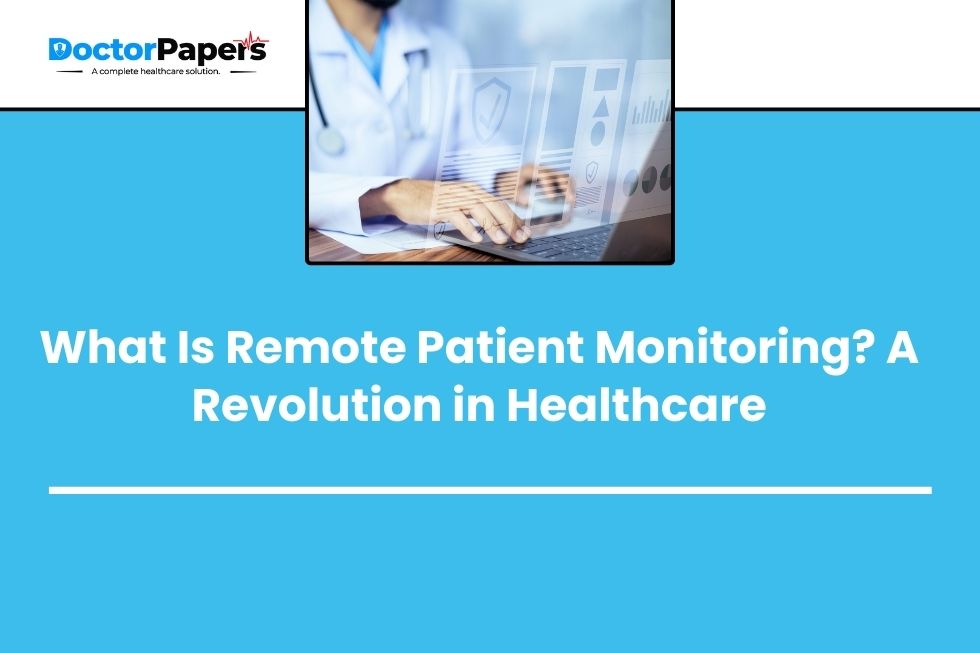Key Takeaways:
→ During the pandemic, virtual medical care administrations and conveyance frameworks, like remote patient monitoring (RPM), became more generally utilized. RPM, which was once new to many individuals, is currently being embraced by medical care suppliers who select their patients for assistance.
→ This blog post clarifies the concept of RPM – remote patient monitoring and differentiates it from related terms, as many people have misconceptions about it.
Understanding Remote Patient Monitoring:
Remote Patient Monitoring (RPM) involves innovation to gather clinical information from numerous people in a single area and safely send it to medical care suppliers in a wide range of locations for evaluation. In more straightforward terms, it permits numerous medical services experts to screen their patients’ well-being somewhat beyond customary clinical settings.
Remote Patient Monitoring (RPM) incorporates wearable gadgets like smartwatches, portable applications, and secure correspondence stages to consistently observe imperative signs and well-being information, giving continuous insight into a patient’s condition.
The Benefits of Remote Patient Monitoring:
1. Improved Patient Outcomes:
RPM enjoys a vital benefit in upgrading results. Specialists can recognize potential medical problems ahead of schedule by observing imperative signs and well-being measurements. This takes into consideration convenient interventions and forestalls inconveniences. This can prompt medical services to improve executives’ infection rates, decrease hospitalizations, and further develop generally persistent well-being results.
2. Enhanced Access to Care:
RPM tends to cause medical care access obstructions, particularly for remote or underserved people. By wiping out the regular in-person visits, RPM empowers them to get care from the solace of their homes.
3. Cost Savings:
Remote Patient Monitoring (RPM) works on persistent results and care access, prompting significant expense reserve funds for medical services frameworks. By at first diminishing clinic readmissions, trauma center visits, and superfluous patient operations, RPM lessens medical care costs and advances patient asset usage. Furthermore, remote observing RPM empowers more proficient utilization of medical care, permitting them to zero in completely on patients requiring quick clinical consideration while monitoring others from a distance.
4. Empowerment and Engagement:
It empowers patients to assume a functioning part in treating their wellbeing. By offering admittance to genuine patient well-being information and customized patient bits of knowledge, patients can make proactive, informed choices about their way of life, medicine adherence, and treatment plans. This expanded commitment to patient medical care can prompt better adherence to therapy regimens and better way-of-life decisions, eventually further developing long-haul well-being results.
Applications of Remote Patient Monitoring:
Remote Patient Monitoring (RPM) applications are assorted and cover different clinical strengths and conditions. Some normal use cases include:
Chronic Disease Management:
RPM is especially advantageous for overseeing ongoing circumstances, such as cardiopulmonary, diabetes, hypertension, and coronary illness. Consistent remote monitoring of imperative signs, medical care therapy, and side effects permits specialists to change therapy plans progressively and give appropriate medications when necessary.
Post-Operative Care:
Following treatment and medical procedures, patients need cautious monitoring as often as possible to distinguish complexities early and guarantee a smooth recuperation. Remote Patient Monitoring (RPM) permits other medical services suppliers to screen patients’ recuperation progress effectively, diminishing the need for successive facility visits and limiting the risk of postoperative intricacies.
Aging Population:
As the worldwide populace ages, medical care administrations for more seasoned grown-ups are becoming popular. Remote Patient Monitoring (RPM) can assist with meeting this populace’s novel medical services needs by empowering Remote Patient Monitoring of patient essential signs, medicine adherence, and fall recognition. This permits more established grown-ups to progress in years set up while as yet getting great consideration.
Mental Health Monitoring:
Remote Patient Monitoring (RPM) isn’t restricted to actual medical issues; it can likewise be utilized to screen psychological wellness conditions like depression, anxiety, and PTSD. Versatile applications and wearable gadgets can follow changes in the state of mind, rest patterns, and movement levels, giving significant insights into patients’ psychological well-being and empowering early meditation when necessary.
Challenges and Considerations:
While remote patient monitoring (RPM) promises to reform medical care conveyance, it has difficulties. A portion of the key contemplations include:
Privacy and Security:
Traveling sensitive health information over advanced networks raises concerns about patient privacy and data security. Medical care suppliers should carry out vigorous encryption and security-explicit measures to safeguard patient medical care data from unapproved access or breaks.
Regulatory Compliance:
The utilization of RPM innovations depends upon different administrative prerequisites, including information protection regulations and medical services guidelines. Medical care suppliers should guarantee consistency with these guidelines to avoid legitimate and moral issues.
Digital Divide:
Certain patient populaces, particularly those in country or low-pay regions with restricted web access or mechanical proficiency, may confront medical care difficulties in getting to remote patient monitoring (RPM) advancements.
The Bottom Line:
Remote Patient Monitoring – RPM addresses a tremendous change in medical services conveyance. It offers a patient-based approach that focuses on persistent comfort, openness, and proactive patient consideration. By utilizing computerized advances to screen patients’ well-being from a distance, RPM can possibly work on understanding results, improve admittance to mind, and diminish medical services costs.










